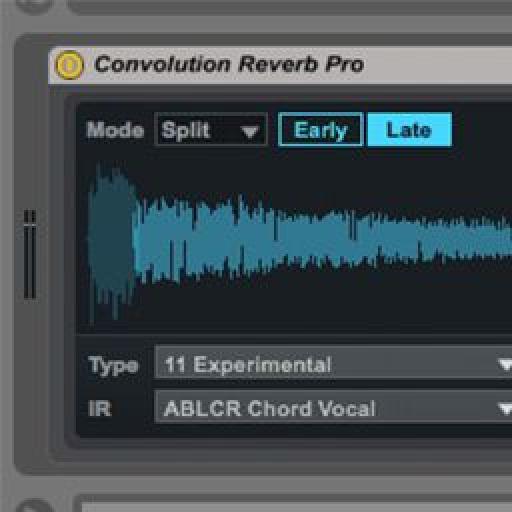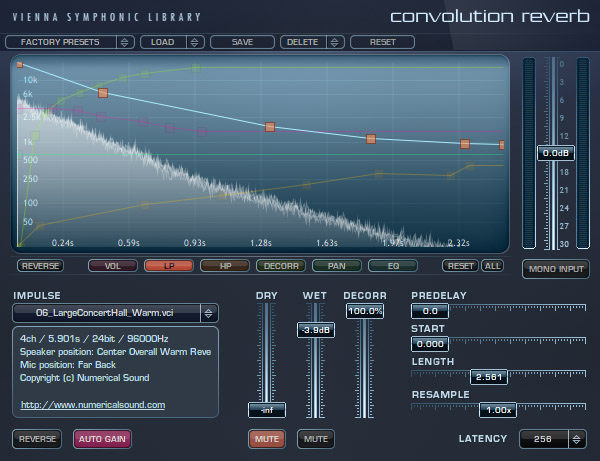When you need to recreate the authentic sound of actual acoustic spaces, there is no alternative to the realism and flexibility of convolution reverb. The IR-L offers the same great sound and performance as our IR1, using a simple, streamlined interface for maximum ease and efficiency. MConvolutionMB Convolution is an essential audio processing technology, capable of recreating extremely realistic reverbs, microphone and box simulations and even simulations of other plugins. MConvolutionMB can do it all with pristine audio quality and amazing flexibility. Convolution reverbs use Impulse Responses (IR) to create reverbs. Impulse responses measure or represent the change of a signal as it moves through a particular system. In this case, that system is a natural, acoustic environment. Convolution reverbs can be used to enhance an entire mix or bring out specific instruments within a mix. Convolution reverb is an exciting technology that sound designers can use to capture the impulse responses (IRs) of any physical location (such as caves, churches, offices, or hallways) and process audio in real time as though it were being played at that location.


Convolution reverb is an extremely realistic-sounding and useful way to recreate specific acoustic environments. Because of this, convolution effects have become a go-to in audio post production, allowing engineers to place sound effects and dialogue in a sonic environment that is stunningly convincing.
The challenge of modulation
Digital reverbs are prevalent in studios around the world and have been used on famous recordings for decades, so there is much interest in capturing them for reproduction. They represent a unique challenge because many of them are modulated.
Convolution Reverb Definition


Convolution Reverb

Such modulation could be used anywhere from the delay loop length, injection and read points, or within the tiny sub-loops (known as all-passes) often used to increase reverberation density. These techniques are used extensively in most reverb designs that need to run on a device with limited computing resources. Only using a handful of reads and writes in a delay loop cannot generate a convincing reverberation due to audible repetitions and resonances that quickly emerge. The process needs thickening and blurring to suppress resonances from building up, so modulation is used to solve this problem.
Convolution Reverb Vst
Modulation in reverberant environments is not something we are traditionally used to hearing because real rooms would have no perceptible time-based variability in them unless the room is physically changing. Any movement of air or people within a room is typically imperceptible. The modulation of classic reverb devices has, however, become something we expect to hear in reverbs used for music as it is psychoacoustically very satisfying. It helps synthetic reverb blend with its source and gives a reverb tail a lush organic quality.